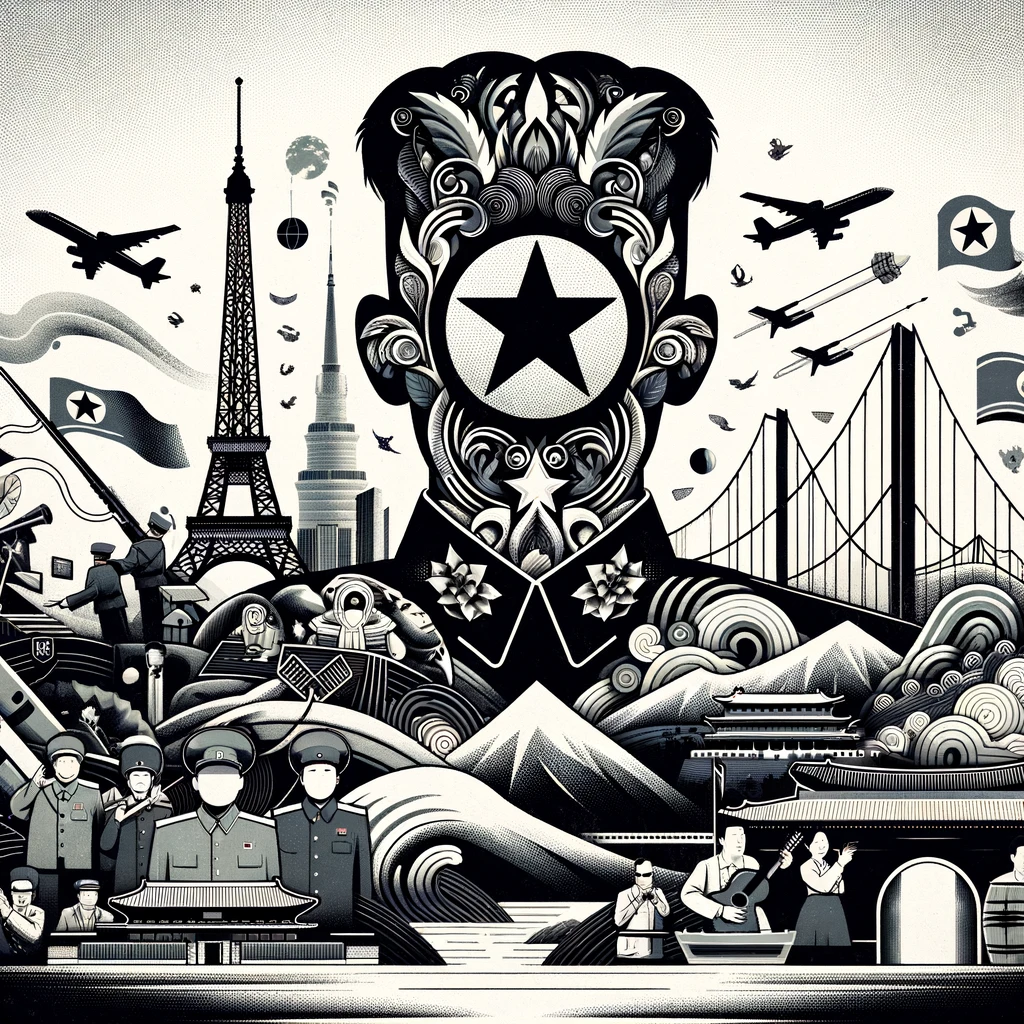Introduction
North Korea, officially known as the Democratic People’s Republic of Korea (DPRK), is a country shrouded in mystery and often headlined in global news. Governed by an authoritarian regime, it presents a stark contrast to its democratic neighbor, South Korea.
Historical Context
The Korean Peninsula’s split into North and South post-World War II set the stage for the Korean War (1950-1953), leaving a lasting impact on North Korea’s political and social landscape. The subsequent armistice, not a peace treaty, led to the creation of the heavily fortified Demilitarized Zone (DMZ), a symbol of the ongoing tension.
Governance and Ideology
North Korea, led by the Kim dynasty since its inception, is characterized by its rigid state control and Juche ideology – a self-reliance principle. Kim Jong-un, the current leader, continues the legacy of his father and grandfather with an iron grip on power.
Economic Challenges
The country faces significant economic challenges, partly due to international sanctions imposed in response to its nuclear weapons program. Despite these challenges, the regime maintains a strong military focus, often at the expense of civilian needs.
Human Rights Concerns
Reports from defectors and international organizations paint a grim picture of human rights in North Korea. The regime’s tight control over information, along with reports of labor camps and severe restrictions on basic freedoms, are major concerns for the global community.
Nuclear Capabilities and Diplomacy
North Korea’s pursuit of nuclear weapons has been a central point of contention in international relations. Periodic negotiations, like those involving the Six-Party Talks, have sought to address this issue, but with limited success.
Cultural Glimpses
Despite the regime’s isolationist policies, glimpses into North Korean culture reveal a strong emphasis on art, especially in the form of mass gymnastics and music, used as tools for propaganda and showcasing national pride.
Conclusion
North Korea remains an enigma in the international arena. While its nuclear ambitions and human rights issues continue to dominate discussions, the country also presents a complex social and cultural fabric that goes beyond the headlines.
North Korea Facts
- Population: As of the last estimates, North Korea has a population of approximately 25 million people.
- Area: North Korea covers an area of about 120,540 square kilometers, making it slightly smaller than Greece.
- Military Size: North Korea has one of the largest standing armies in the world, with an estimated 1.28 million active-duty personnel. This is significant, especially considering the country’s population size.
- Economic Indicators: Due to the secretive nature of its government, accurate economic data on North Korea is difficult to obtain. However, it is widely believed that the country faces significant economic challenges, with much of its population living in poverty.
- Nuclear Tests: North Korea has conducted several nuclear tests since 2006, drawing international condemnation and leading to strict sanctions. The exact number of nuclear weapons in its arsenal is unknown.
- Internet Usage: Internet access in North Korea is extremely limited and closely monitored by the government. Only a small number of high-ranking officials have access to the global internet.
- Life Expectancy: The estimated life expectancy in North Korea is around 72 years, which is lower compared to South Korea’s 83 years.
- Literacy Rate: North Korea reports a literacy rate of nearly 100%, but these figures should be taken with caution due to the lack of independent verification.
- Human Development Index (HDI): North Korea does not officially report data for the Human Development Index, but third-party estimates often place it significantly lower than most other countries.
- Defectors: Each year, a number of North Koreans defect to South Korea and other countries. The exact number varies annually, with reports indicating a few hundred to a thousand each year.
